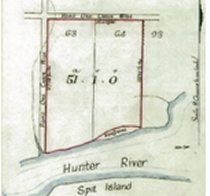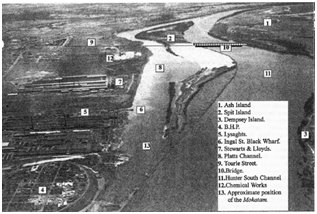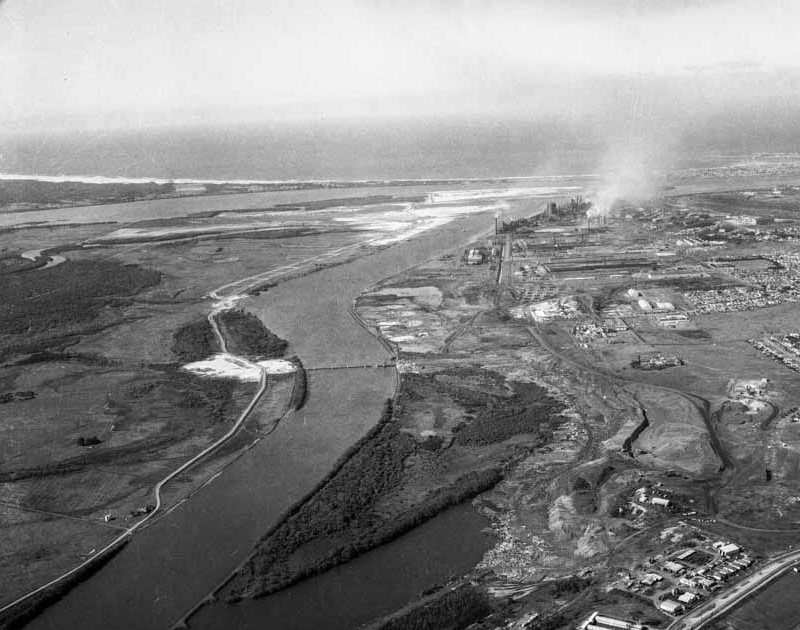
FRANZ JOSEF SCHUCK
Franz Josef Schuck of Ash Island
Article by Cherylanne Bailey
BIRTH
Franz Josef Schuck was born on 9th June1834 at Roßbach, near Aschaffenburg, Germany,the third child to Farmer Martin Schuck and his wife Katharina Wetzel. He was baptised into the Roman Catholic faith, as was his first born at Edwin Hickey’s Osterley estate
EMIGRATION
At the time of Franz’s emigration, a bounty was paid to NSW Landholders for bringing continental immigrants to New South Wales for their own service. The Consul for Hamburg and German Immigration Sydney-based Agent Karl Ludwig Wilhelm Kirchner arranged the importation of several shiploads of vinedressers, shepherds, farm servants, mechanics and domestic servants and it is assumed that Franz emigrated as a part of the large group of Germans recruited by Kirchner to work in the fledging wine industry. Family folklore, across many of Franz’s descendant lines, is consistently that Franz was involved in the Hunter’s wine industry, albeit in a very small way. According to his Certificate of Naturalisation, Franz arrived under the command of Captain L Meyer aboard the Catteaux Wattel in March 1855, however as a single male he was merely included in the total number of single males aboard the ship.
EDWIN HICKEY
Edwin was a wealthy landowner whose estate Osterleylocated between Hinton and Raymond Terrace included a vineyard, appears to have paid Franz’s bounty. This is evidenced by newspaper accounts and birth records which record Franz as residing therefor over a decade, and with no official “Osterley-based” records known to have survived my assumption is purely based on these accounts.Other Germans also serving their bonding included Heinrich Burg who had arrived earlier with his family in 1849 aboard the Parland.
MARRIAGE
Elisabeth (Ernesti) Ann Ingram had emigrated to New South Wales from England as a 13 year old with her family aboard the Java. The Church of Scotland Hinton Register records that on 27th May1861 she married Franz Schuck. She is recorded as an illiterate servant, and, sadly, her baptistfather Sargon is noted as deceased. Sargon had died only a few weeks earlierwhen the wheel of a dray ran over his head whilst in the employ of JOHN EALES atSwan Reach.
CHILDREN
Franz and Elisabeth had 17 children, the first four Osterleyborn. In late 1865-early 1866,having served his “bonding” to Hickey, he moved the family to Ash Island after privately leasinga double plot of land from Robert Fisher (of Stockton’s Tweed Factory). What exactly prompted the move remains unknown – was it as a result of talking with fellow German emigrants bonded to Alexander Walker Scott on the Island, William Kirchner (shipping agent) himself who remained friends which many of the German families he helped emigrate or perhaps emigrant families already settled on Ash Island – we will never probably know.
ASH ISLAND SCHOOL
The Schuck children who survived infancy attended the original old slab hut school however no records of early attendees survive to evidence this.
SCHUCK FARM
Schuck Farm is identified on Old Plan No. 2482 as Allotments 12 and 13, in an 1877 map as lots 90 and 91and in 1893, when a large portion of the Island went up for public auction, the double plot is listed as Lots 63 and 64. Schuck’s Farm developed on Robert Fisher’s grant of land, awarded on 28th January 1854, as two separate Crown grants. The Certificate of Title contains a map with details the property as Lots 63 and 64 (namely 51 acres 1 rood) with mangroves at the back of Lot 64 and a creek running in the 3rd last portion of that lot and thereafter across Lot 93 (corner block) and out into the Hunter River.

SCHUCK HOME
According to a newspaper account where his grandson John Martin Schuck reminisced about his grandfather’s farm, he stated that the slab hut cottage and farm was situated about a quarter mile from the Tourle Street Bridge. Franz and his family etched out an existence growing vegetables and fruit in his market garden and selling it at the Newcastle Market Street Wharf and in later years direct to sailing ships in the harbour. Franz, and his sons when old enough, made the trip to Newcastle twice weekly on the tide, regardless of how early in the morning it was. In addition, a 1960’s article where a grandson was interviewed offered the reader that one son was an apiarist and many a noisy shindig was held where beverages based on the honey were consumed causing much merriment. By 1871, evidenced
by John TE Gowland’s Hunter River map (left)

SCHUCK FARM
Schuck’s farm appears well developed whilst a 1877 map identifies “R Fisher” as still owning the land. …. The hand drawn colour tracing (right) copied from the Certificate of Title records the land is known as Lots 63 and 64 with mangroves at the back of Lot 64 and a creek running in the 3rd last portion of that lot and thereafter across Lot 93 (F Hughes and by 29 October 1897 Michael Nowlan’s corner block) and then out into the Hunter River. The farm was located at the south-western end of the Island (being the 2nd block in from Dempsey Channel) heading towards Hexham. Putting the exact area into modern-day context, the Farm was situated looking north just after you travel across the Tourle Street Bridge onto Kooragang Island and come out of the right-hand bend. Back then, Dempsey Island was in line with what is known as Mayfield East today.

INDIGENOUS OCCUPATION
When Ash Island was subdivided in the early 1860’s, a hundred foot exclusion zone from the water frontage had to be observed by Lots 58 – 62 inclusive, formerly Lots 90 & 91, (as evidenced on the Newcastle Herald advertisement of the sale of “37 Farms”, advertised on 29th October 1897). This was so the Indigenous population could still fish and live off the land and included Franz’s double lot.
NATURALISATION
On 19 October 1878 Franzwas naturalized, a necessary requirement for the purchase the land in New South Wales, he and his young sons having improved with the building of a slab cottage, farm, shed, stables, a well and river mooring. However, fate intervened when in February 1883 Franz drowned in the Hunter River at Raymond Terrace.
FRANZ’S DEATH
Franz died on Saturday, 10th February 1883, at approximately 2pm when he drowned in the Hunter River . He was on a return voyage from Raymond Terrace where he had plough shears sharpened. A violent westerly wind blew up and overturned his boat at Raymond Terrace with his body washing up on mud flats days later. He was buried on the 14th February 1883 at Sandgate Cemetery. An article reporting on his Inquest is headed “Drowned Hunter River” whilst the account of his death reads as follows: ,,, … Following the tragedy of his drowning aged only 50 years, purchasing the landon which the Schuck Farm stood fell to Franz’s son, Robert Francis Schuck, the conveyance from Robert Fisher to Robert Francis Schuck dated 19 September 1890.
SCHUCK CREEK
Unofficially named by the locals in the later decades of the 1800’s, it was 1 – 4 metres wide in parts. It was a creek of similar width to Moscheto Creek however its flow was stopped years ago in the name of BHP progress. Schuck Creek cut across MichaelNowlan’s corner block (29 October 1897 but prior to that the Rommel family and earlier still the Barrett family) and thereafter out into Dempsey Channel. According to Clarence Pemberton, a former Moscheto Island resident, Schuck Creek at its widest was 4 metres and would run dry at low tide. Locals would gain access to the Creek via the water as even though after 1911, when Franz’s son Robert Schuck and his family left and the land was returned to grazing, the farms either side were still worked. Clarry would string a net from bank the bank and at low tide scoop the fish out. He recalls the Creek was a deep one, not far from where the Tourle Street Bridge now stands and fisherman would be rewarded with a rich harvest of fish or prawns.
SCHUCK STREET
This Ash Island Street was named after the family and ceased being known as such in the years following Robert’s departure from the Island after he sold the farm as evidenced in the Certificate of Title Volume 905 Folio 178 which evidences a transfer of land to Hartley Spurr on 21st September 1912. Hartley is listed on the Certificate as a Fishmonger and had a shop on the river in Newcastle which he operated over many decades before it closed in 1966. According to the document by Transfer dated 4th September 1925 Hartley sold the land to James Peterson Lintott of Mayfield, Dairy Farmer, however the Street was still referred to as Schuck Street around this time as recalled by descendants who went back to trace earlier generations Island footprints.
VIEW FROM SCHUCK’S HUT
The view from the Schuck’s slab hut home was looking out across the Hunter River to Shelly Beach, Platt’s Hill and in later years the Cook Island Pine tree.

TRAVELLING UP THE RIVER
In proximity to present day Mayfield East, Bill Hartup had a wharf and boats he hired out, the Towns had their boat building business (near where Kooragang Date Palm grows, the Hughes and Schuck Farms overlooked what is now the Tourle Street Bridge but back then was Shelly Beach. Boatrowing and sculling races took place regularly from the late 1800s to around 1910 from Hexham’s Travellers Rest (McDonalds) to Ironbark Creek.
SCHUCK MEMORIAL ASH ISLAND
As late as the early 1980s a great grandson of Franz, Peter Schuck (Eric Pearce’s son) recalled that after you crossed the Tourle Street Bridge onto Kooragang, where the road split there was a wooden sign memoralising Franz Schuck as an early settler on the Island however the sign was never photographed, has never sighted by me and has been lost to the ravages of time. Peter recalls thinking of Franz and his life every time he crossed over to the Island in his youth to fish in the creeks with his Pop Eric Pearce Schuck.
1950’s
The mangroves on the river fringing and above the Tourle St bridge (and either side of the white patch of BHP dumping ground) mark the proximity of the 1860-1890s Schuck farm whilst at the top right are the plumes of BHP workings. Spit Island (reclaimed in the late 1950’s) is the front-centre of the picture ending in a mangrove covered point.

VINES CUTTINGS – GERMANY TO AUSTRALIA 1855
Franz bought to Australia with him cuttings of both a red and white grape vine, confirmed by several descendants including a Great Granddaughter. In 2004 cuttings of both varieties were obtained from vines which had been planted at Cardiff, those vines grown from cuttings of the original vines which were first planted at Edwin Hickey’s Osterley property, then Ash Island, at Mount Pleasant/Lovedale (Cessnock) and in the Barossa Valley). Cuttings of the vines are now found growing in several Newcastle suburbs including Edgeworth, Dungog, Hawkes Nest, Nelson Bay and Ash Island. Another descendant confirmed in 2004 what my line of the family had passed down through the generations, ie that “Franz was indeed involved in the fledgling wine industry but “only in a very small way and he did bring to Australia with him cuttings from both a red and white grape vine”. The vines did not flourish on Ash Island as copper smelting works on the River directly opposite Moscheto Island caused many orchards in proximity to suffer terribly over successive years, including most notably Peter Crebert’s vines. Black clouds were often observed to cover Moscheto and the bottom part of Ash Island in prevailing winds and 1867 newspaper accounts indicate that residents were by that stage raising concern. Whilst Franz was able to keep the vines alive the fruit produced was minimal until his son Robert Francis Schuck planted cuttings on his Lovedale property in 1912 where the vines not only flourished but are documented as being award winning.
AWARD-WINNING, HIGH PRICED GRAPES –
From “The Cessnock Eagle and South Maitland Recorder, Friday 13 January 1922, page 6”
At the local union sale last Friday the record wholesale price for grapes sold at Cessnock was realised, The grapes brought no less than 1/3 and a half a lb. The grapes were of a fine quality and were grown by Mr Schuck.
From “The Cessnock Eagle and South Maitland Recorder (NSW : 1913 – 1954), Friday 3 February 1922, page 3”
The record prices for fuit obtained at the local unions this season show that there are a few market that compare to Cessnock. Mr G.H. Palmer has received 2/9 a dozen for peaches, Mr R Schuck 1/5 and a half a lb for grapes W. F. Chatterton 2/11 a dozen for Lemons,and Mr Roy Ekert 3/6 each for Melons. It is doubtful if better prices have been realised in the state.
CARPENTRY SKILLS
Franz was a keen carpenter, a newspaper account evidencing he exhibited in the Sydney Royal Easter Show. His boat, similar to a waterman’s skiff in appearance and approximately 8 metres long, was used to row his produce to the Newcastle Market Street Wharf for sale. It boasted a wooden stern seat inlaid with its name, the “Rising Star”, in encrusted oyster shell together with 5 stars, depicting each of Franz’s 5 sons. He also hand carved a cedar wooden dressing table box, inlaid with mother-of-pearl, together with a minature ladies shoe housed in one of the box’s compartments. The tiny shoe was hinged on the heel, a well concealed, albeit small, hiding spot for precious rings. I can only guess that perhaps Franz made these as a keepsake of his heritage of a family of German cobblers and shoesmiths.
